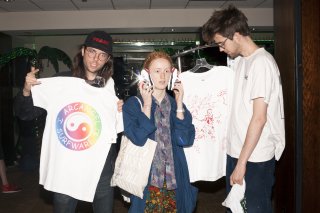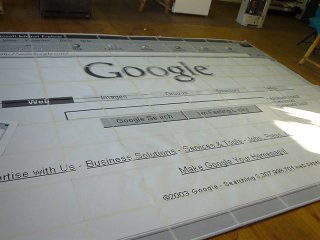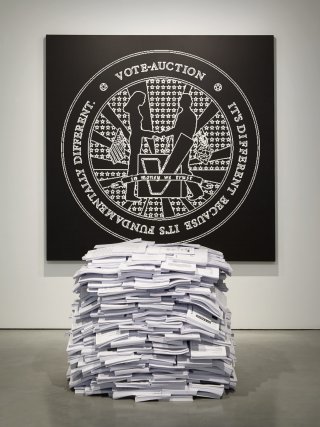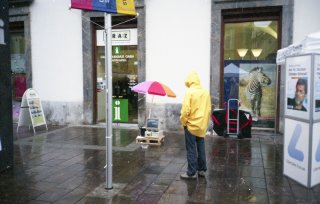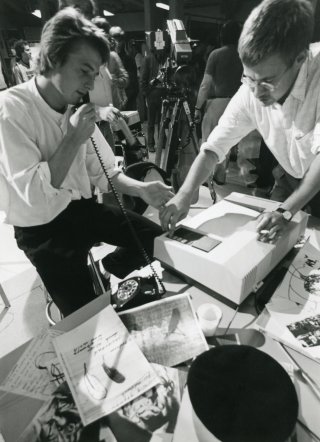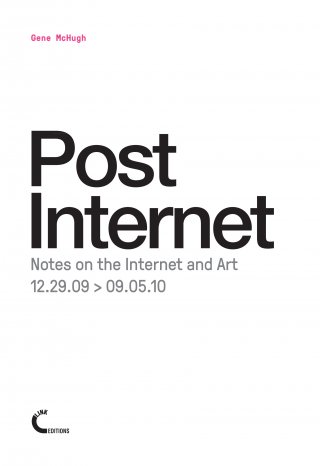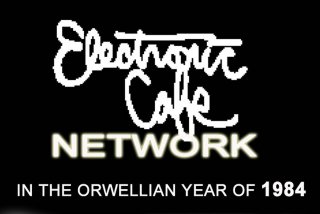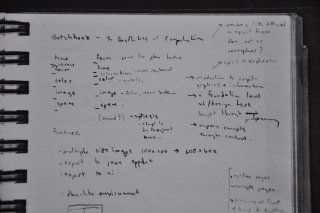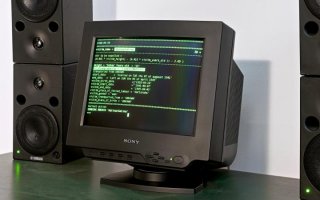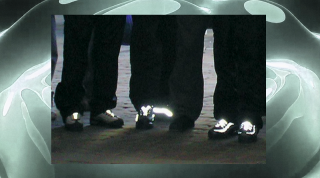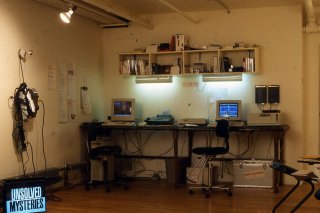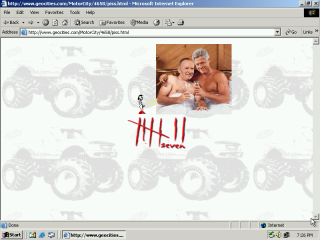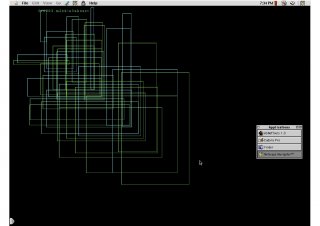StarryNight
Alex Galloway, Mark Tribe, and Martin Wattenberg
1999
StarryNight was developed as an artistic interface for the curated, online archive of Rhizome’s email discussion list, an important forum for artists working with new forms of media in the late 1990s. Each week, selected messages from the list—including critical exchanges, sharing resources and information, and artwork in email form—were saved to the archive, which was called Textbase.
In StarryNight, each email in the archive was represented by a glowing point of light against a dark background, which would increase in brightness each time its corresponding message was accessed in the archive. Users could navigate among them by selecting assigned keywords, which would draw “constellations” connecting related emails in the database.
Online again following a major effort by Rhizome’s preservation team, StarryNight is both a classic work of information aesthetics and a rich portrait of Rhizome’s early online community.
“Finally, a map that can rightfully be mistaken for the territory!” — David A. Ross
VISIT WORK
Starry Night was included in “THE ART HAPPENS HERE: NET ART’S ARCHIVAL POETICS”
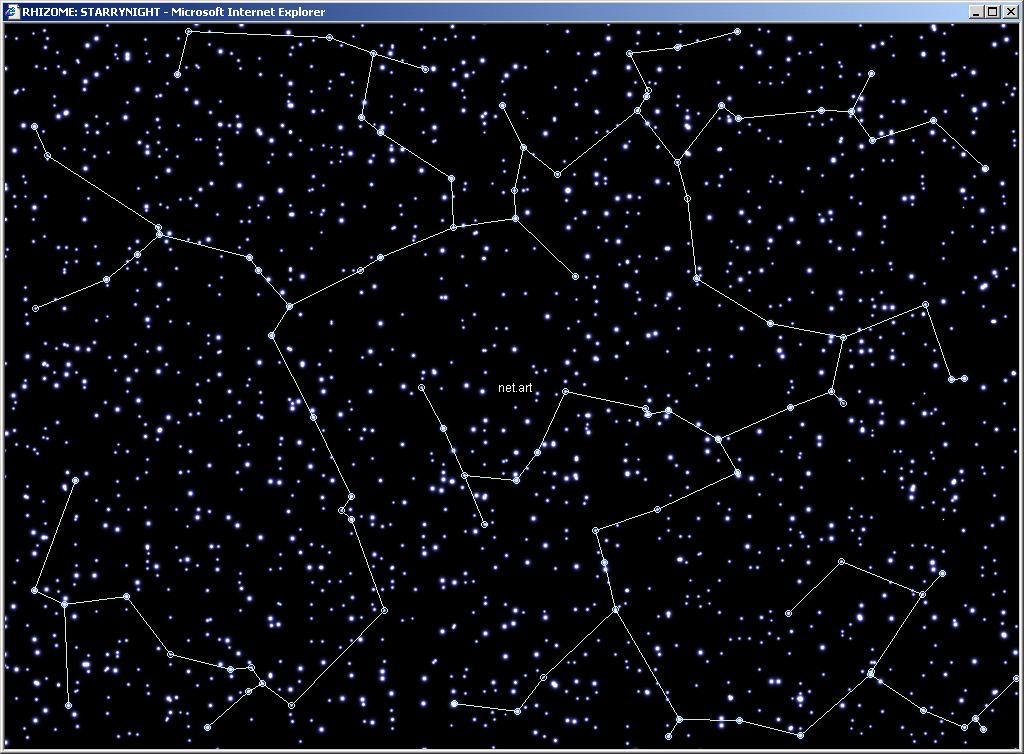 StarryNight, 1999. Screenshot, ca. 2000, Internet Explorer 5.0 for Windows 2000
StarryNight, 1999. Screenshot, ca. 2000, Internet Explorer 5.0 for Windows 2000
Rhizome was founded by artist Mark Tribe in 1996 as an email discussion list for artists working in emergent forms of media art.
“I felt it was important that we begin to develop an aesthetic and theoretical vocabulary to discuss and understand these emergent forms of media art. I initially thought of it as a place for discussion, exchange of ideas, and information, but also for presentation, so people could see one another’s work. — Mark Tribe
Inspired by conversations with Nettime cofounder Pit Schultz, Tribe envisioned that emails from the list would be archived in a web-accessible database—then a novel concept.
Each week, selected emails would be saved to an edited archive called TextBase, with keywords added to each message for more effective searching.
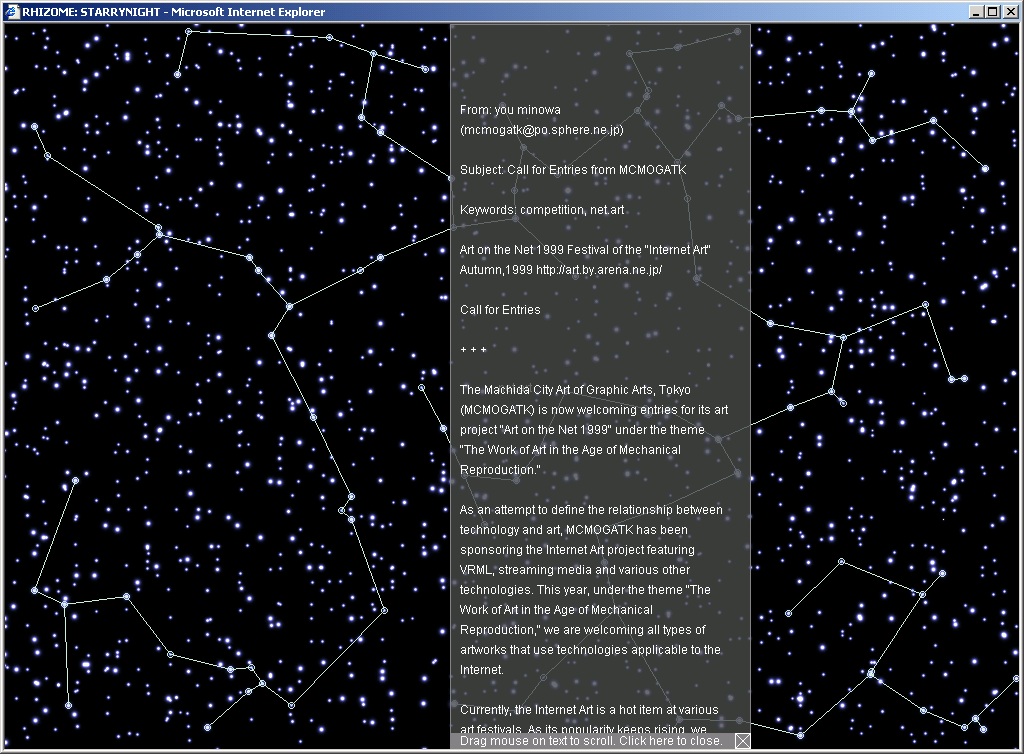 StarryNight, 1999. Screenshot, ca. 2000, Internet Explorer 5.0 for Windows 2000
StarryNight, 1999. Screenshot, ca. 2000, Internet Explorer 5.0 for Windows 2000
When a visitor would access an email on Rhizome’s web-based archive, a dot would appear on the black background of StarryNight. With each subsequent visit, it would grow slightly brighter.
Users could click a given star, triggering a pop-up menu. They could opt to read the message, which would cause it to appear onscreen, or select a keyword associated with the text.
Clip from a 2001 promotional video for Rhizome.
The latter option would display a constellation of all the stars that shared that keyword—a network of meaning, opening up the archive for new discoveries.
StarryNight is both a map and a community record. As a navigation tool, it was impossible to use without leaving a trace of which texts the user would pursue and which they would ignore.
Tribe conceived of StarryNight soon after the email list was launched, but it did not come to fruition until 1999. Soon after, several other works were commissed as part of the “alt.interface” series, which aimed to surface material from Rhizome’s archives, including Galloway’s Every Image and Wattenberg’s Spiral.
These three works, all of which revolved around idea of an artwork as the interface to an archive, were exhibited at the New Museum’s Media Z Lounge in 2001 as part of the exhibition “[email protected],” curated by Tribe and Jennifer Crowe in collaboration with Anne Ellegood and Kim Boatner.
To restore the work, Rhizome’s preservation team led by Dragan Espenschied had to build an approximation of Rhizome's API that once had made the Textbase archive accessible, and a software environment for the original Java applet generating the constellations.
 StarryNight on view at the New Museum as part of “The Art Happens Here: Net Art’s Archival Poetics.”
StarryNight on view at the New Museum as part of “The Art Happens Here: Net Art’s Archival Poetics.”
Because of a data loss that took place more than ten years ago, the new restoration contains only a subset of the original Textbase, which was recovered from materials associated Martin Wattenberg’s Spiral. The work originally would have had more visible stars.
The restoration is on view through May 26, 2019 at the New Museum as part of “The Art Happens Here: Net Art’s Archival Poetics.”
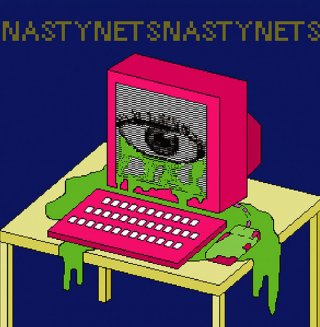 Nasty Nets
JOHN MICHAEL BOLING, JOEL HOLMBERG, GUTHRIE LONERGAN, MARISA OLSON, ET AL
2006
- 2012
Nasty Nets
JOHN MICHAEL BOLING, JOEL HOLMBERG, GUTHRIE LONERGAN, MARISA OLSON, ET AL
2006
- 2012
